
Want to grow more, bigger, and better tasting tomatoes?
Whether you're new to the vegetable garden or a seasoned gardener, our tips for growing tomatoes will help you increase your yield and produce much better-tasting tomatoes.
Tips on seed packets or seedling labels tell you how to plant them, but they don't tell you how to care for them properly.
Nor do they give you the tips that have been discovered by experienced gardeners for decades to grow great tomatoes this summer.

Many gardeners seek tips for growing tomatoes because their plants are not producing as much as they would like.
Generally, the main problem is that the cultivation techniques used are not suitable.
Luckily, here are 13 tricks that will help you grow bigger, bigger and better tasting tomatoes in no time!

When planting tomato stems, plant them as deep as you can without the leaves touching the ground. By burying the plant deeply, the stem will have more contact with the soil and produce more roots.
Better roots help increase moisture content. The foot thus has more roots to draw water.
The root system also allows the plant to "anchor itself" to the soil. He will strengthen it. This prevents it from bending and being damaged by storms or high winds. This trick helps to fortify tomato plants.

Once your plants are well established in the ground, remove the lower leaves to increase rapid upward growth.
The lower leaves are useless because they don't catch the sun and don't do enough photosynthesis. This is why it is necessary to give preference to the upper leaves which will soon take over the others.
When your plant is about 60cm tall, remove all the leaves from the bottom half of the plant.
Use pruning shears to avoid damaging the stem. Removing these leaves will also prevent diseases coming from the ground up through the leaves.
The growth of tomatoes will be faster and there is a better yield.
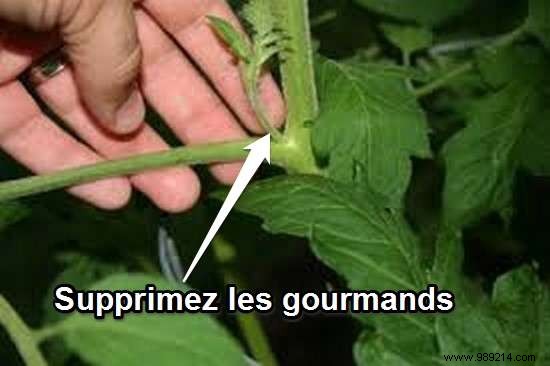
As you can see in the photo, the "gourmands" are the stems that grow between the central stem and the main stem.
They should be pinched as soon as they begin to grow, as they do not produce fruit. Do it on feet that are at least 80 cm.
Suckers are not good for your tomato plant because they increase shaded area and reduce the amount of sun on your plants. As a result, the tomatoes develop less well and may lack that characteristic sweet taste.
Some tomato growers skip this step. It is not essential, but it is known to promote the production of sweeter and healthier fruits.
Know that you can turn these suckers into new tomato plants. Just make cuttings. Growing tomatoes from cuttings is an effective way to expand your garden without having to buy seedlings from the store. It's natural and you know where it comes from!

Mulching around tomato plants helps conserve water and helps warm the soil. It also promotes a healthier root system.
Mulching also helps prevent soilborne diseases by minimizing plant contact with the soil.
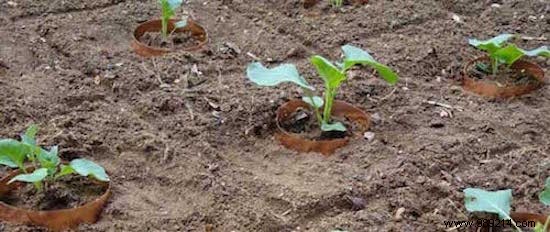
Snails and slugs can quickly devastate your tomatoes if you don't use the right repellents.
To avoid using harsh chemicals near your tomatoes, lay copper strips or copper tubing around the tomato area.
The copper will create a chemical reaction that prevents slugs and snails from invading your tomatoes. You can also use tape like this around pots.
To discover: Tired of Snails Eating Your Flowers? Here's the Repellent They'll Hate!

By using tomato stakes around your plants, you prevent them from toppling over. It is a kind of cage to support tomato plants, make them climb and protect them from strong winds.
Upright tomatoes experience less stress on their stem. They can thus better raise sap and nutrients for better fruit. Perfect for having a lot of tomatoes on one foot!
If you are looking for a tomato stake, we recommend this one.

When transplanting tomato plants that you have germinated from seed, consider leaving at least 60-90cm between each plant.
They will thus take better the sun which will also reach the lower part of your tomato plants. Photosynthesis is promoted and you get healthier plants and better tomatoes. Ideal for fattening your tomatoes!

When it's hot, tomatoes sometimes crack and split, which promotes their rotting.
This proves that the tomato is not getting enough water. Refer to Tip #10 below to find out how to water them properly.
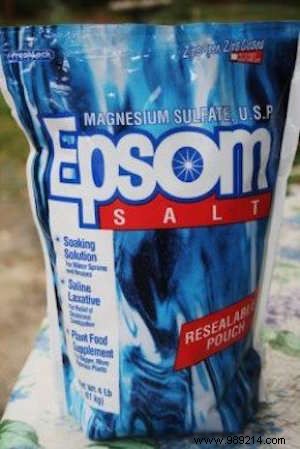
Epsom salts have been used by generations of gardeners to boost tomatoes, promote growth, achieve stronger stems, prevent yellowing of leaves and extend the growing season.
Epsom salt can be applied to the soil at planting or as a drench during the growing season.
At planting , add Epsom salt to the soil, digging it into the soil using a soil scraper. Put a tablespoon in the hole.
For watering to Epsom salt, add one tablespoon of Epsom salt per 3 liters of water. Apply to young plants.
After the initial application at planting, continue with Epsom salt waterings using one teaspoon per 3 liters of water every two to three weeks.
By using Epsom salt, your tomato plants will have the magnesium and sulfate needed to help produce healthy, strong plants. This is a super effective trick to boost your tomatoes!
You can save a lot of money by using Epsom salt instead of magnesium or sulfate... If you're looking for cheap Epsom salt, we recommend this one.
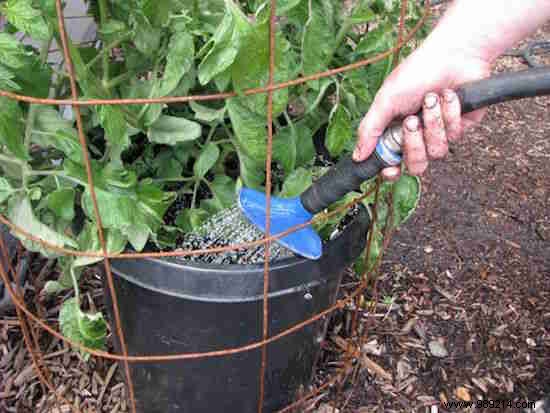
Watering your tomato plants regularly may seem obvious. Indeed, we water all our tomato plants without thinking that there was a procedure to follow.
Still, you just might not be doing it the right way. Tomato plants must first be watered from the bottom. This prevents water from splashing and spreading disease.
Then, when watering your adult tomato plants, you must water them slowly so that the water penetrates well into the soil. Avoid dripping water. Water them deeply, taking your time. The more water penetrates the soil, the better the roots will be able to receive it. This also allows the soil to stay moist and thus prevent the plant from drying out.
After watering, check the soil by digging. You should have at least six inches of moist soil, but more is better.
If the soil is not moist enough, continue watering. Once you've done this for a week, you'll have a better idea of how much water you need to keep your feet well watered.

Plant marigolds or marigolds near your tomatoes. Perfect for adding touches of color and volume to the vegetable garden. But in addition, marigolds have another advantage:they repel nematodes.
Nematodes cause deformities in stems, roots and fruits. They impede the circulation of nutrients and carry other diseases.
Plant these flowers near the base of your tomato plants. Their smell and foliage prevent nematodes from attacking your tomatoes. They will thus be in an Olympic form!
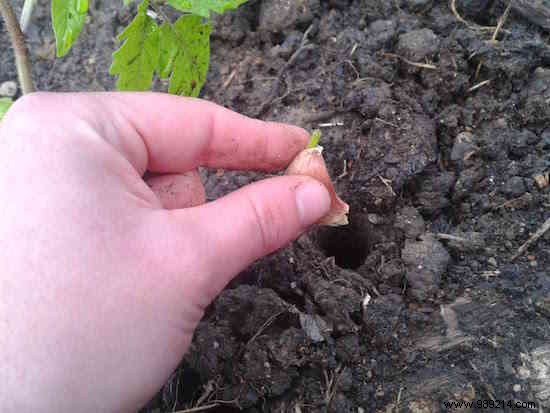
Want to improve the taste of your tomatoes? Use garlic. Plant garlic bulbs near your tomato plants to improve the taste of your tomatoes, but also to reduce parasitic fungi. The overall quality of your tomatoes suffers as quickly.
If you don't feel like planting garlic in the middle of your vegetable garden, mix a few crushed garlic cloves with 3 liters of water and water the soil. You will get the same effect.
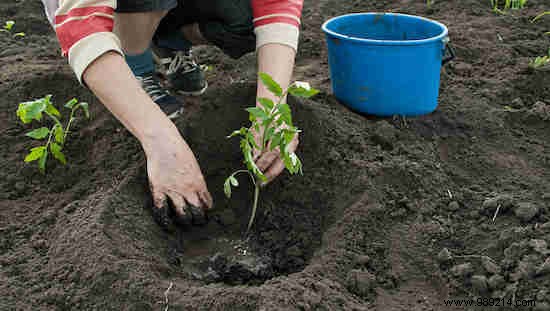
Like most crops, the planting area for tomatoes should change every 2 years . Tomatoes should not be grown in the same place for more than 3 years in a row.
You can rotate them every year if you have the space, otherwise every 3 years at most. This will give you better yields.
After three consecutive years of growing tomatoes in the same place, the soil becomes less fertile. And the tomato plants will be less productive.